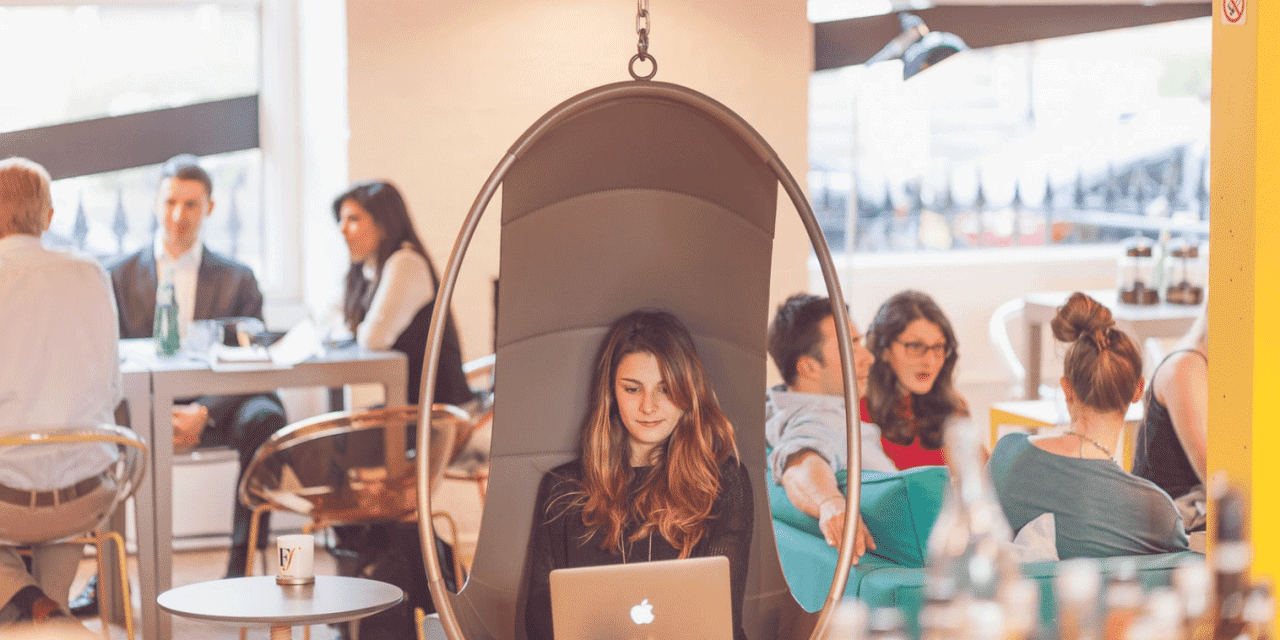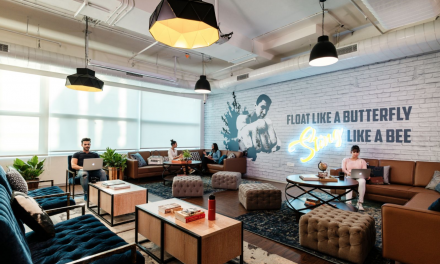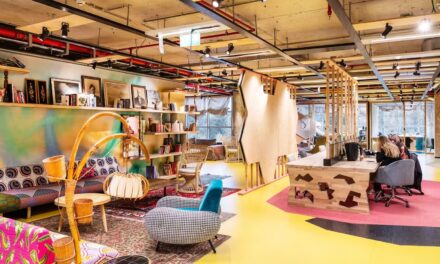Let’s be honest. Where does most of your stress designate from? If you answered work, 75% of people agree with you according to The Center for Workplace Mental Health. Being the fact that we spend 60-70% of our adult life at work or thinking about work, this is honestly not surprising. What is surprising, though? The fact that we’re not taking this more seriously.
The nonchalant and non-progressive attitude that derives from work-life balance and workplace mental health is truly plaguing the adult population. We have to to start being more open to this, and we have to address it.
It’s true, there are multiple components that can ultimately derail workplace mental health. Like.. the multiple emails, the unforeseen job tasks, the decrease in productivity levels, the ongoing communication about work, etc. No matter how much you love your job, little things can become stressors and can eventually cause an overload.
When talking about wellness, it becomes a broad term that typically falls into the realm of physical activity and physical wellness. Although wellness is part of a much larger spectrum.
We’ve heard of wellness programs in the workplace, which take a stab at employees’ physical levels and physical wellness in order to increase their productivity, but these programs are typically designed to be just that.. physical. How can we combat the mental wellness aspect as well? (without having to hire a bunch of pricey professionals).
Let’s look at wellness from this lens:
As stated before, you’re working at least ⅓ of your day, more than likely working from your computer, which is naturally draining as we all know. Although most of us can’t escape work, we can escape the everyday stressors within our environment.
The answer? Wellness spaces.
You may have heard the term “wellness space” floating around and wondered what in the world people are talking about? Well, let’s start here:
Each room within your home or office space has a designated purpose, specifically designed to meet a specific need. Such as, a bedroom is entitled for sleeping, your living room or lounge area is designated for gathering, conversing, or quality time. Your kitchen is designed for eating, and office space is designed for working. Now, which area within your everyday environment is designed for, relaxation, or more so, an energy reboot? If you can’t think of one, that might be a problem.
How many times have you just wanted to step out of the office? Not for any reason in particular, but just for a different environment? This is common, and honestly, this is HEALTHY. Taking a slight break to remove yourself from an environment that you surround yourself in eight plus hours a day is HEALTHY. It boosts creativity, allows for focus, and almost immediately allows you to shift your mood.
What if we told you you can do this without actually having to leave work?
Sometimes we can’t always just step outside, or sit in your car for a quick mind re-leaver. Unfortunately, the weather is not always on your side for that. Some days it’s too cold, other days it’s blazing hot. Also, if you work for a larger company, the walk to get outside or to the parking lot to sit in your car could take up half of your break. So, let’s be a little more reasonable here, and implement something indoors.
The way a wellness space is designed is to ultimately give you the satisfaction of leaving your office without actually.. leaving your office.
A wellness space can be as simple as an integrated area in your coworking space designed for energy production, regulation, and increased work productivity.
How can this be done? Well, the fact is, each member has different needs, and we need to understand each of them. How does each member relax, calm, and distress? We can find this out by breaking down each individual’s sensory needs.
Yes, our senses.
Sight, sound, touch, smell, movement, and pressure input.. more universally known in terms of visual, auditory, tactile, olfactory, vestibular, and proprioceptive input. Each person responds differently to these inputs, and having an overall understanding of this can guide you towards creating the perfect wellness space for your members.
What would we put in there?
Well, once we find out the needs of your members and their response to the various sensory inputs, we can then pick and choose which products align.
So, let’s say — the majority of your employees calm in areas with dimmer lights, areas that smell light and fresh, in more of a nature scene with plants, with soothing sounds/music, with softer furniture like bean bags and pillows, or with furniture that allows for slow movement for those who are more anxious and restless, like a hanging or rotating chair.
There you have it, you’ve met your employees needs simply by targeting their senses. Now comes the decorating aspect, what colors should we use? Is this important? Well.. yes. Very.
Color tones illicit different moods. Meaning, each primary color impacts us in different ways. For example, green helps with balance and harmony in the body and strengthens the nervous system, while orange decreases feelings of tiredness, and increases alertness and concentration while promoting creativity, etc.
Now, how do we pick which color to choose for our wellness space?
Let’s make it easier on you; you DON’T have to.
There are multitudes of customizable lights that allow each employee to choose and set their preferred mood. Providing a neutral area with customizable color changing lights is ideal.
So let’s retract a little.
Workplace wellness is extremely important to physical and mental wellness. Yes, targeting both is ideal although your mental state at work tends to be a bit more hindering. Adding a wellness space to your coworking space is truly a great step in producing employee well being and promoting productivity.
Now, let’s take a look at this unfortunate situation. You don’t have anywhere to implement a wellness space within your facility.
Well, you’re not off the hook; wellness is still important. Providing wellness and sensory strategies for each member to target their needs is another avenue you can take. Again, you need to make this very individualistic as each person functions differently.
Once your members realize you’re taking their wellness seriously, you’ll retain more people and begin to witness a more positive shift in the vibe of your environment.
Take a look at these coworking spaces that utilize wellness spaces and wellness strategies within their facilities.

Uncommon Spaces – London, United Kingdom
Uncommon Spaces uses multiple aspects of wellness in order to target their members’ needs. They provide a natural aura throughout their coworking spaces to help their members feel like they aren’t stuck inside a building. Their wellness design includes: ergonomic furniture, activity based working philosophies, and incorporating natural lighting throughout each office. They even implement curated music and bespoke scents within office spaces.Their wellness spaces are state of the art and provide a seamless relaxing vibe.

Work Well Coworking – Austin, Texas
Work Well Coworking is a coworking space that takes overall wellness seriously. They implement several different wellness strategies within their facility, such as outdoor spaces designated for relaxing, relieving stress, and experiencing needed downtime to increase productivity. This comfortably-designed space has plenty of cozy chairs and couches, too, for unwinding after a stressful work call.

WOOD – Lisbon, Portugal
WOOD in Lisbon is a unique “feel good” coworking space with a focus on wellness. This awesome community places a strong focus on creating a happy workplace. For members, WOOD offers various wellness options including monthly meditation, yoga massage, and aromatherapy.
_____________________________________________
All in all, putting wellness first in your coworking experience is not only necessary, but a pivotal focus point in retaining members and creating a happy workplace.









